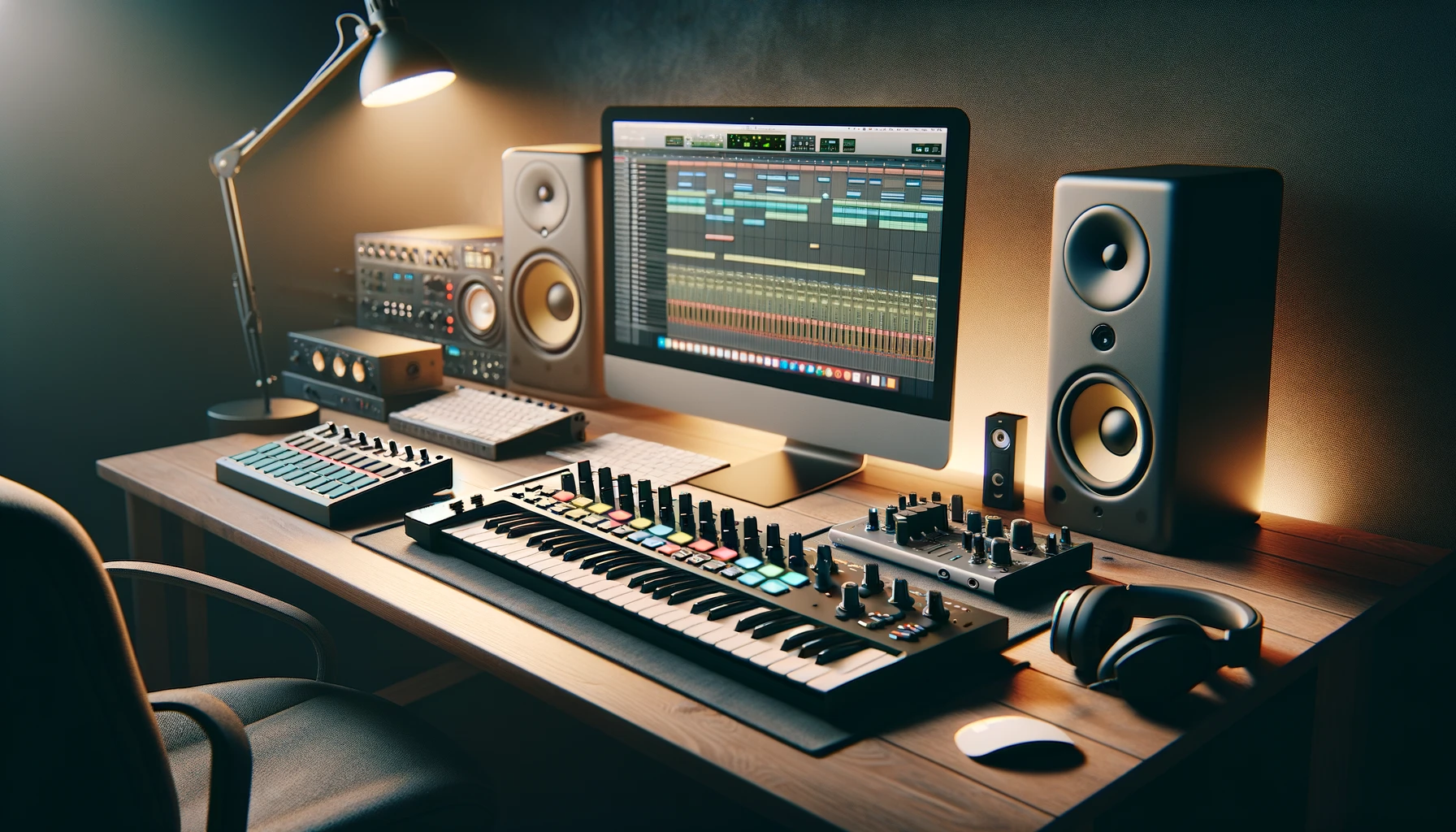Do you really need yet another piece of equipment just to use your MIDI controller?
While a dedicated audio interface is not an absolute necessity for using a MIDI controller, it enhances the experience and unlocks key production capabilities.
Let’s take a closer dive into what MIDI controllers and audio interfaces each bring to the table and when it makes sense to have both…
Do I Need an Audio Interface for a MIDI Controller?
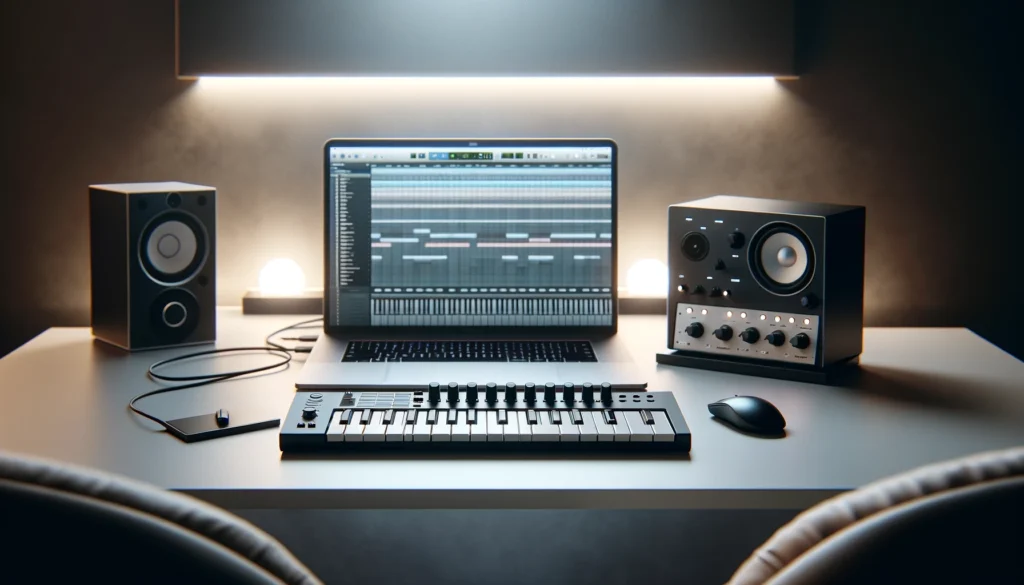
In short – no, you do not require an audio interface solely for the purpose of using a MIDI controller.
A MIDI controller transmits performance data, not audio signals.
So an interface is not essential for basic MIDI controller operation.
However, we’ll explore below why most home music producers will still want an audio interface to unlock key features when using a controller.
What is a MIDI Controller?
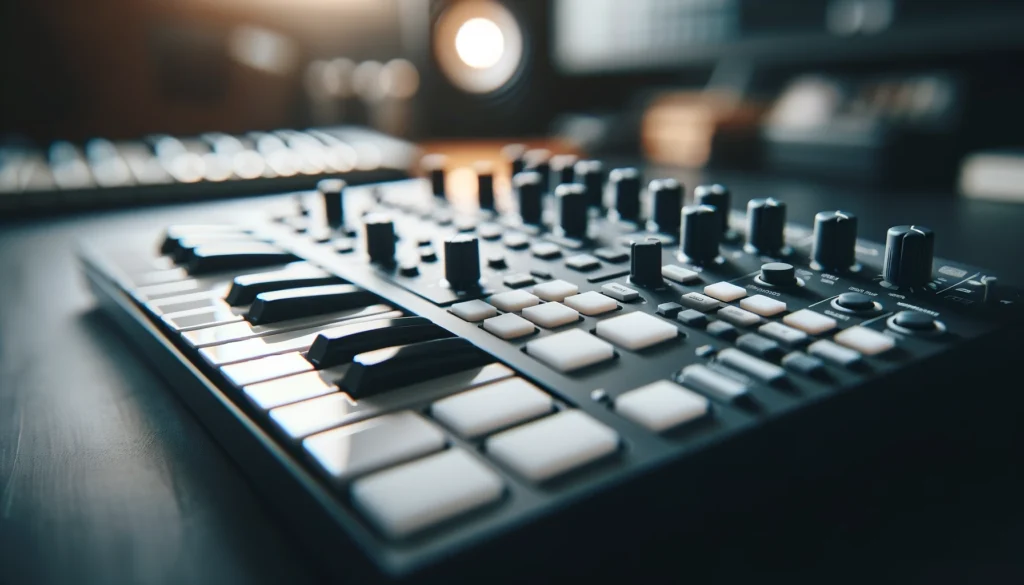
A MIDI controller is a hardware device that is used to generate MIDI data signals.
MIDI stands for Musical Instrument Digital Interface.
It allows you to control parameters and settings of digital audio workstation (DAW) software and virtual instruments.
Common controls found on MIDI controllers include keyboards, pads, faders, knobs, and buttons.
A MIDI controller does not produce sound on its own.
It needs to be connected to computer software like a DAW or hardware synthesizers or modules to generate audio from the MIDI data.
The main purpose of a MIDI controller is to allow more hands-on control over software than what a computer keyboard and mouse provide.
With so many hardware controls like keys, pads, knobs, and faders available, MIDI controllers make playing and programming virtual instruments, as well as adjusting parameters like volume, panning, effects much more intuitive.
This helps speed up workflow and can lead to more natural sounding musical performances.
Many MIDI keyboards come with their own sounds and can generate audio.
But when used with a DAW, these keyboards typically send MIDI data instead of audio.
So the DAW or virtual instruments are still needed to produce sound which is then sent to audio interfaces or external sound sources.
What is an Audio Interface?
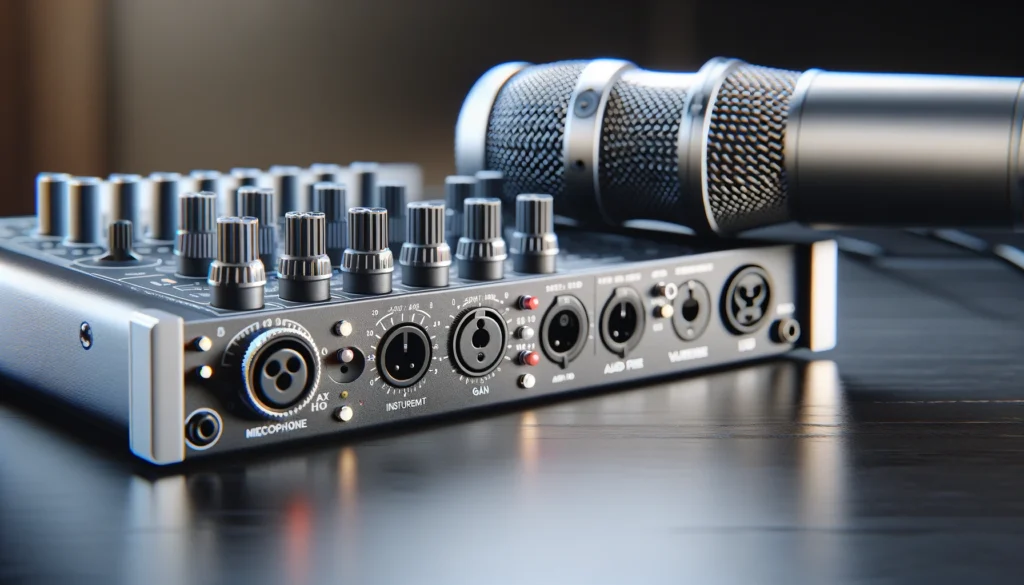
An audio interface is a piece of equipment used to get analog sound signals in and out of a digital audio workstation (DAW) on a computer.
Audio interfaces have inputs that allow you to connect microphones, instruments like guitars and keyboards, as well as many other kinds of audio devices.
The inputs on an audio interface convert the incoming analog audio signals into digital data that can then be processed by the DAW software on the computer.
Audio interfaces also typically have outputs that allow you to connect to speakers, headphones, amplifiers, and other equipment in order to monitor or playback audio.
Most audio interfaces connect to computers via USB, Thunderbolt, or Firewire connections.
This allows for multichannel inputs and outputs, low latency monitoring, and the conversion of signals at high sample rates and bit depths.
Most modern home/project studio setups include a multi-input audio interface paired with a DAW.
In addition to the analog to digital conversion of signals, many audio interfaces also provide other functions like:
– Phantom power for condenser microphones
– Monitoring with low latency for live tracking
– Headphone outputs for direct monitoring
– MIDI inputs/outputs
– Mix controls for blending input signals
Do You Need an Audio Interface for a MIDI Controller?
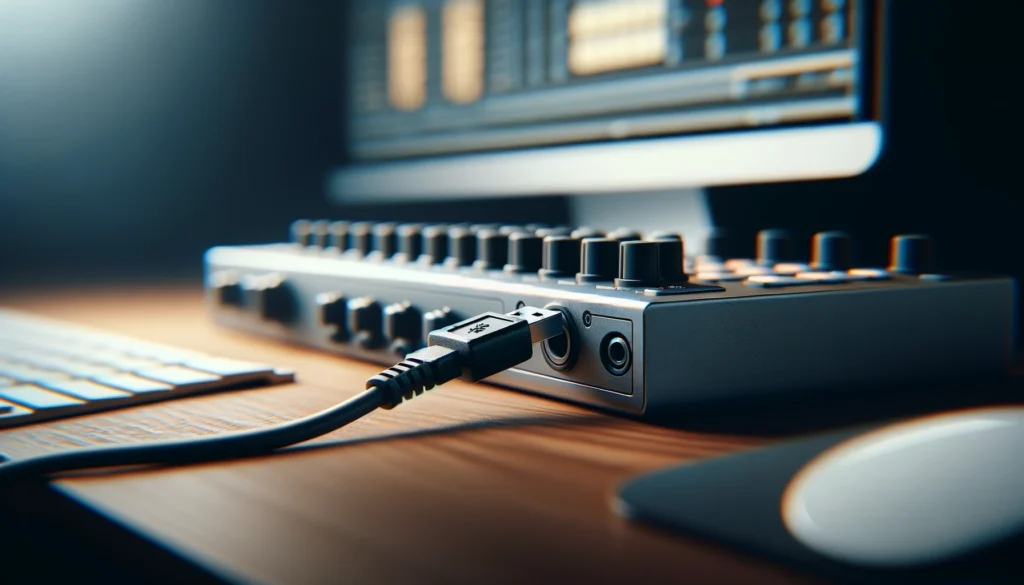
The main function of a MIDI controller is simply to send MIDI data.
This includes note, controller, program change and other messages to external sound sources such as software instruments, synth and sound modules to control their parameters and trigger notes and sounds.
A MIDI controller itself does not process or generate audio the way an actual synthesizer does.
The MIDI data is sent from the controller via a MIDI cable or through a USB connection to other devices.
Therefore, you do not necessarily need an audio interface solely for the purpose of using a MIDI keyboard controller.
An audio interface in a studio setup would be utilized on the other end – where the sounds are actually being generated by virtual instruments, soft synths, and sound modules, which ultimately need to be converted to analog audio signals for listening.
So in summary, a MIDI controller is strictly generating digital MIDI data to be used to remote control other audio devices.
This is why an audio interface is not absolutely necessary just for a MIDI controller alone.
When an Audio Interface is Recommended
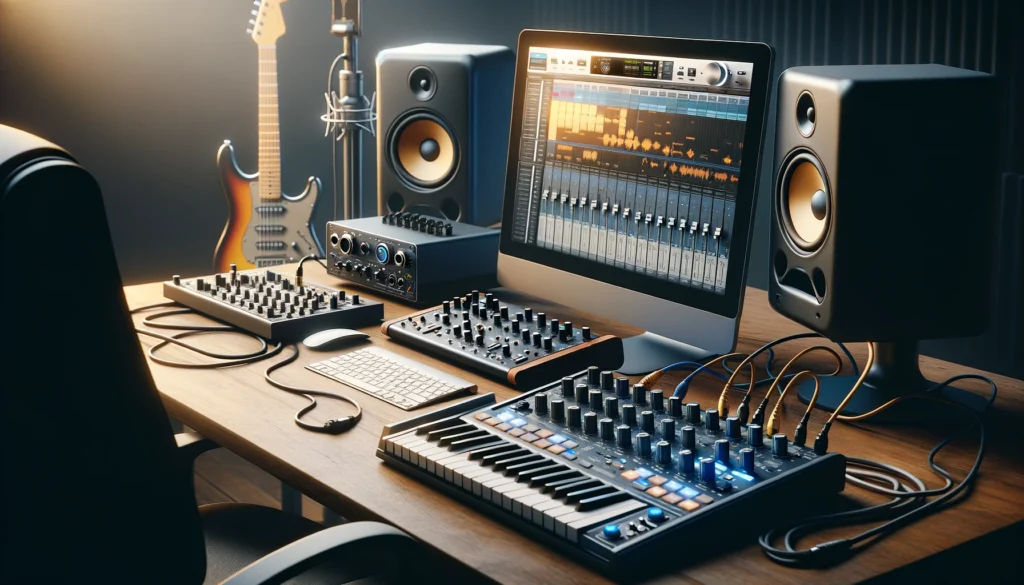
Even though a MIDI controller does not require an audio interface to function in transmitting MIDI information, there are some common music production scenarios where having an audio interface is highly recommended if using a MIDI controller:
Recording External Instruments with MIDI Controller
If you want to record external instruments like guitars, bass, keyboards along with your MIDI controller performance into a DAW, you would need an audio interface with the required inputs to get those instruments into the computer.
The audio interface takes care of converting the instrument signals into digital data for recording and processing in the DAW software.
It also provides outputs for monitoring and playback.
Using Virtual Software Instruments with a MIDI Controller
If your MIDI controller is controlling virtual instrument software plugins and synths that are generating sound inside your DAW environment, you again need an audio interface to get that sound output from the software into speakers, headphones or an external amplifier system.
Those software instruments are digitally producing audio when triggered by the MIDI controller.
So you need audio interface outputs and conversion hardware to route the sound out of the computer set up into the monitoring system.
Avoiding Latency Issues when Monitoring
When using MIDI controllers with virtual instruments that generate sound inside the box, monitoring the live audio output with zero latency is critical for a good performance feel.
Relying solely on the computer soundcard introduces more latency compared to dedicated audio interfaces.
Audio interfaces are optimized to provide low latency monitoring of both live instruments as well as virtual instruments coming out of a DAW environment.
This is important if you’ll be recording parts in real-time with your MIDI keyboard or controller.
Conclusion
While a MIDI keyboard controller itself does not require an audio interface to transmit MIDI performance data, having an audio interface is recommended for most music production scenarios involving a MIDI controller setup.
If you simply want to trigger sound module hardware like synth modules using the MIDI controller data, you may be able to avoid needing an audio interface.
But most home producers will want a multi-input audio interface with low latency monitoring capabilities if:
– Recording external instruments via microphones or direct connections in addition to MIDI controller parts
– Using virtual instrument plugins and software synths to generate sound which requires audio conversion and monitoring
An audio interface completes the production picture by getting analog audio in and out of the computer environment effectively when using a MIDI controller and DAW workflow.
